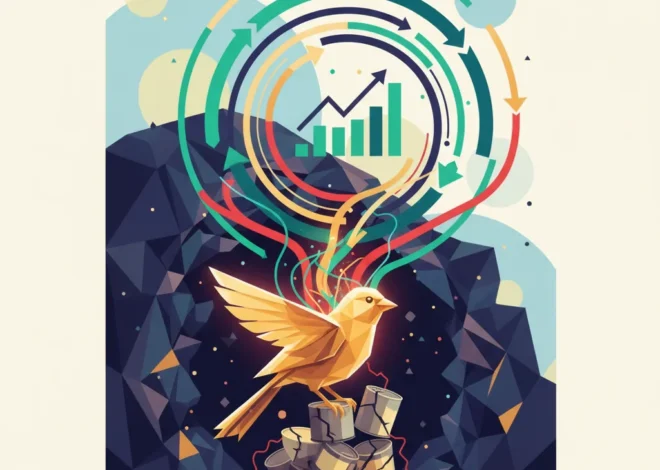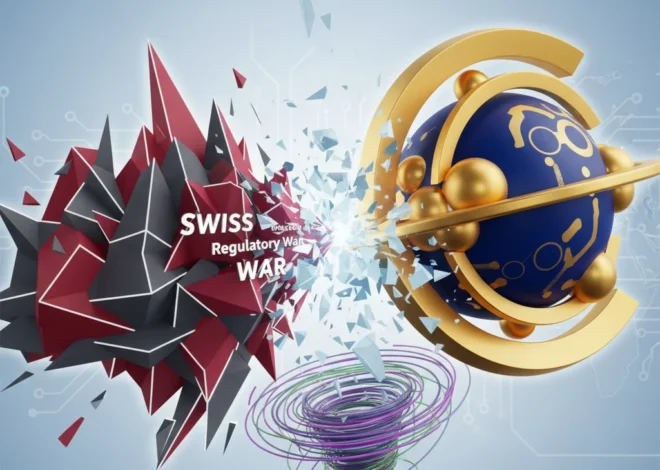
The Ticking Time Bomb in Your Portfolio: How Fake Research is Poisoning Modern Finance
In the relentless, data-driven world of modern finance, we worship at the altar of information. From sophisticated quantitative models that drive high-frequency trading to the macroeconomic forecasts that shape central bank policy, our entire financial ecosystem is built on a foundation of research and data. But what if that foundation is cracking? What if the very information we use to make multi-trillion dollar decisions is compromised, biased, or outright fraudulent?
This isn’t a hypothetical question. It’s a growing crisis that lurks beneath the surface of academic journals, economic reports, and market analyses. A recent letter to the Financial Times by Clinical and Health Psychologist Joel S Richman, responding to an essay on fake research, posed a profound question that should send a chill down the spine of every investor, business leader, and policymaker. While the letter itself was brief, its implication is enormous: if we can no longer trust the research, how can we trust any of the systems built upon it?
This article explores that terrifying question. We will delve into the alarming proliferation of flawed and fake research, trace its toxic ripple effect through the global economy and stock market, and provide a framework for navigating a world where data integrity can no longer be taken for granted.
The “Fake Research” Epidemic: A Cancer Spreading Beyond Academia
The term “fake research” might conjure images of obscure academic squabbles, but its scope and impact are far broader. It encompasses a spectrum of intellectual dishonesty, from fabricating entire datasets to subtly manipulating statistical analyses (a practice known as “p-hacking”) to achieve a desired, often headline-grabbing, result. This phenomenon is growing at an alarming rate. A 2023 study published in Nature noted a dramatic increase in paper retractions, with fraud accounting for a significant portion. Some estimates suggest that the number of articles retracted for reasons like fake peer reviews or manipulated data has skyrocketed in recent years (source).
The drivers are a toxic cocktail of incentives. In academia, the “publish or perish” culture creates immense pressure. For corporations, favorable research can mean a soaring stock price or regulatory approval. For consulting firms, a contrarian economic report can generate millions in publicity and client fees. The result is an ecosystem where the reward for producing a specific outcome can outweigh the reward for producing the truth.
This isn’t merely an ethical dilemma; it’s a systemic risk. When the well of knowledge is poisoned, everyone who drinks from it is affected. In the world of finance, where decisions are made in microseconds based on data feeds and research reports, the consequences can be catastrophic.
The Price of Green: Are EU Climate Rules on a Collision Course with Energy Security?
How Bad Data Infects the Financial World
The journey from a flawed academic paper to a real-world financial crisis is shorter and more direct than most people realize. The integrity of our entire financial infrastructure—from individual investing decisions to global banking policy—relies on the assumption that the underlying data and research are sound.
1. Mispriced Assets and Skewed Stock Market Valuations
Imagine a publicly-traded biotechnology firm. A new study is published in a seemingly reputable journal, claiming their experimental drug shows unprecedented efficacy. The company’s stock soars. Investment funds pour in. But months later, it’s revealed the study’s data was selectively reported, ignoring patients with adverse side effects. The stock collapses, wiping out billions in shareholder value. This is a direct consequence of research influencing capital allocation. The same principle applies to flawed macroeconomic research that might overstate the growth potential of an entire sector or country, leading to asset bubbles.
2. Flawed Economic Policy
Central banks like the Federal Reserve and the ECB don’t make interest rate decisions in a vacuum. They rely on a vast array of economic research and data on inflation, employment, and growth. One of the most famous examples of how this can go wrong is the case of “Growth in a Time of Debt,” a 2010 paper by economists Carmen Reinhart and Kenneth Rogoff. The paper, which argued that countries with high debt-to-GDP ratios experience slower growth, was incredibly influential, cited by policymakers to justify austerity measures across Europe and the US. However, it was later discovered that a simple Excel spreadsheet error, along with questionable data exclusion, significantly skewed their findings (source). The real-world impact of policy based on this flawed research is still debated, but it serves as a stark warning about the link between academic studies and the health of the global economy.
3. “Garbage In, Garbage Out” in Fintech and Algorithmic Trading
The rise of financial technology (fintech) and AI-driven trading has amplified the risk of bad data exponentially. Machine learning models are only as good as the data they are trained on. If an algorithm is fed a decade of historical market data that is itself based on flawed corporate reporting or skewed economic research, its predictive capabilities will be compromised. This could lead to massive, automated miscalculations, triggering flash crashes or creating unseen systemic vulnerabilities. In this high-tech world, a single flawed dataset could be the butterfly that causes a hurricane on the other side of the financial world.
4. The Wild West of Blockchain and Crypto
Nowhere is the impact of unsubstantiated research more apparent than in the blockchain and cryptocurrency space. The industry is rife with “white papers”—documents that serve as a prospectus for new projects—that often contain grandiose technical claims and unrealistic economic models with little to no peer review. Investors have poured billions into projects based on these documents, only to see them fail or be exposed as scams. The white paper is a form of research, and its corruption has been a primary driver of retail investor losses.
A New Framework for Due Diligence: Building a Moat of Skepticism
In an environment of eroding trust, investors and leaders can no longer afford to be passive consumers of information. We must become active, critical interrogators of the data presented to us. This requires a new, more rigorous approach to due diligence that goes beyond surface-level analysis. Technology can help—AI tools are being developed to spot statistical anomalies in papers, and blockchain could one day offer an immutable ledger for research data—but human critical thinking remains the ultimate defense.
Here is a practical framework for evaluating any piece of research or data that could influence a significant financial decision. We call it the “Source Integrity Checklist.”
Before relying on a study or report, ask the following critical questions:
| Evaluation Criteria | Key Questions to Ask |
|---|---|
| Source & Funding | Who paid for this research? Is it an independent academic institution, a think tank with a known political leaning, or a corporation with a vested interest in the outcome? Follow the money. |
| Methodology Transparency | Does the report clearly explain how the data was collected and analyzed? Is the dataset available for others to inspect? A lack of transparency is a major red flag. |
| Peer Review & Replication | Has this study been published in a high-quality, peer-reviewed journal? More importantly, have other independent researchers been able to replicate the findings? A single, un-replicated study is not proof. |
| Author’s Conflicts of Interest | Does the author consult for companies in the industry they are writing about? Do they have a financial stake in the outcome? Reputable sources will disclose these potential conflicts. |
| Statistical vs. Practical Significance | The results might be “statistically significant,” but is the effect size meaningful in the real world? A drug that reduces symptoms by 0.1% might be statistically significant but is practically useless. |
Adopting this mindset is crucial for anyone operating in today’s complex information landscape. The cost of being wrong is simply too high.
Inside the MBA Classroom: The 5 Critical Business Debates Shaping Our Future
The Price of Trust: Final Thoughts
The question posed in the Financial Times letter serves as a wake-up call. The integrity of research is not an abstract academic concern; it is the bedrock of sound economics, prudent investing, and stable markets. As our world becomes more interconnected and our financial systems more complex, our reliance on data will only intensify.
Allowing the standards of that data to erode is an unconscionable risk. It threatens to unwind decades of progress in financial theory and practice, replacing rigorous analysis with noise and misinformation. The fight against fake research is, therefore, a fight for the future of finance itself. It requires a collective effort from academia, industry, and regulators to demand higher standards of transparency, accountability, and integrity. For individual investors and business leaders, the takeaway is clear: in a world of questionable data, the most valuable asset you can possess is a healthy and well-honed sense of skepticism. Trust, but verify—or risk becoming another casualty of the information war.
Beyond the Tinsel: What Christmas Ads Reveal About the Global Economy and Investment Landscape


